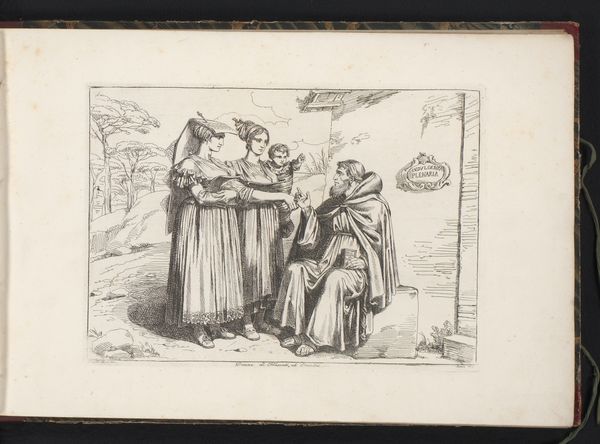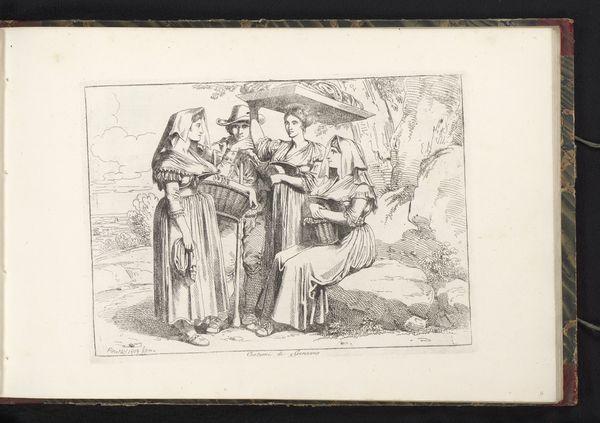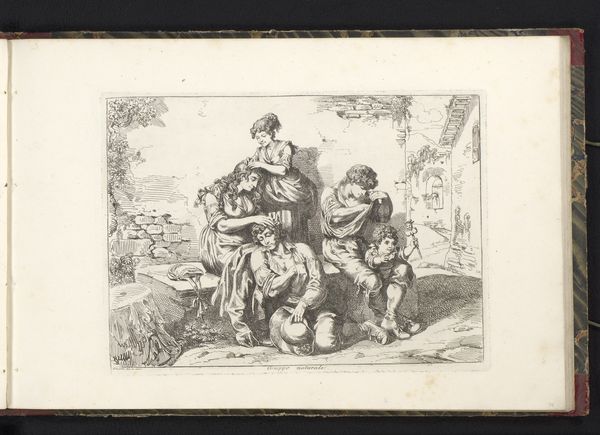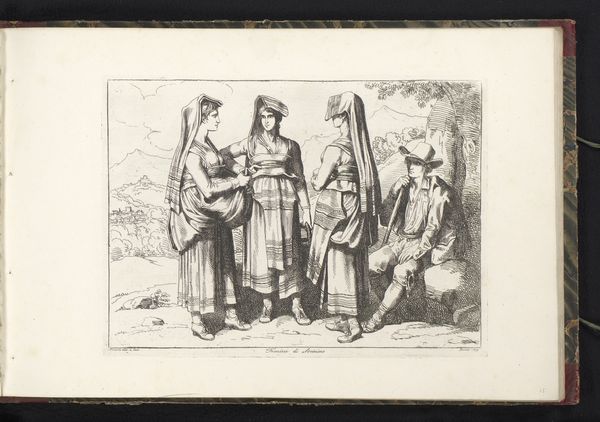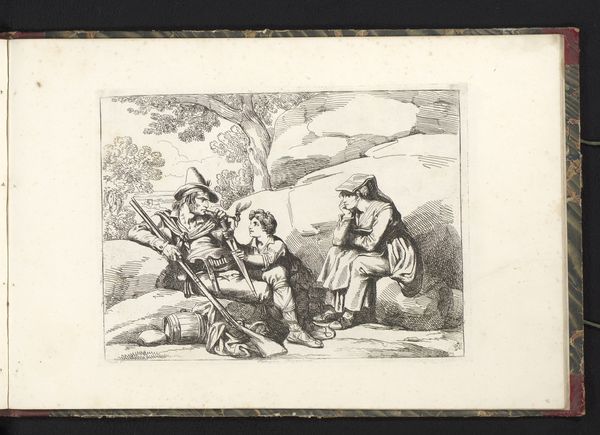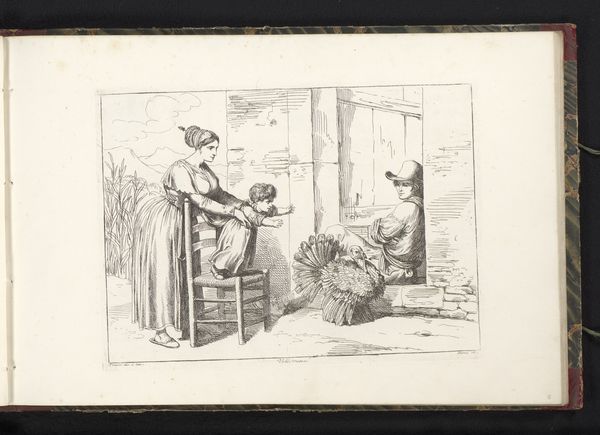
drawing, paper, ink
#
portrait
#
drawing
#
landscape
#
figuration
#
paper
#
ink
#
genre-painting
#
italian-renaissance
Dimensions: height 203 mm, width 281 mm
Copyright: Rijks Museum: Open Domain
Editor: Here we have Bartolomeo Pinelli's "Drie vrouwen uit Tivoli," a drawing in ink on paper from 1819. I'm struck by how matter-of-factly it portrays these women; it feels almost documentary in its style. What do you see in this piece, especially considering its historical context? Curator: I see a snapshot of gendered labor and social hierarchy rendered with deliberate neutrality, wouldn’t you say? It’s crucial to recognize that 1819 Italy was far from unified, and Papal Rome actively suppressed any movements towards liberalism or reform. So, how might Pinelli's choice to depict these working women not as romanticized figures but as individuals performing daily tasks, relate to the era's political undercurrents and gender expectations? Does it reinforce them, challenge them, or something else entirely? Editor: That's fascinating. I hadn't considered the political implications. It does seem like a conscious decision to depict them without idealizing them, but what would Pinelli gain from challenging the expectations of the time? Curator: Perhaps he aimed to make visible the often unseen labor underpinning society or critique the expectations placed upon women. What effect do you think this might have on a contemporary audience then versus now? Think about whose stories were considered worthy of representation, and what that tells us about power dynamics at the time. Editor: It definitely makes you think about who is absent from the dominant narratives of the Italian Renaissance. Thanks, this has given me a lot to consider about the role of women and class in art during that period. Curator: Absolutely! It reveals how art, even seemingly simple genre scenes, can participate in complex dialogues about identity, labor, and societal norms. Always remember to situate the art object within its cultural and political landscape.
Comments
No comments
Be the first to comment and join the conversation on the ultimate creative platform.


